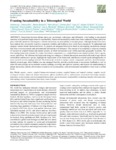Por favor, use este identificador para citar o enlazar este ítem:
http://www.alice.cnptia.embrapa.br/alice/handle/doc/961534Registro completo de metadatos
| Campo DC | Valor | Lengua/Idioma |
|---|---|---|
| dc.contributor.author | LIU, J. | pt_BR |
| dc.contributor.author | HULL, V. | pt_BR |
| dc.contributor.author | BATISTELLA, M. | pt_BR |
| dc.contributor.author | DEFRIES, R. | pt_BR |
| dc.contributor.author | DIETZ, T. | pt_BR |
| dc.contributor.author | FU, F. | pt_BR |
| dc.contributor.author | HERTEL, T. W. | pt_BR |
| dc.contributor.author | IZAURRALDE, R. C. | pt_BR |
| dc.contributor.author | LAMBIN, E. F. | pt_BR |
| dc.contributor.author | LI, S. | pt_BR |
| dc.contributor.author | MARTINELLI, L. A. | pt_BR |
| dc.contributor.author | MCCONNELL, W. J. | pt_BR |
| dc.contributor.author | MORAN, E. F. | pt_BR |
| dc.contributor.author | NAYLOR, R. | pt_BR |
| dc.contributor.author | OUYANG, Z. | pt_BR |
| dc.contributor.author | POLENSKE, K. R. | pt_BR |
| dc.contributor.author | REENBERG, A. | pt_BR |
| dc.contributor.author | ROCHA, G. DE M. | pt_BR |
| dc.contributor.author | SIMMONS, C. S. | pt_BR |
| dc.contributor.author | VERBURG, P. H. | pt_BR |
| dc.contributor.author | VITOUSEK, P. M. | pt_BR |
| dc.contributor.author | ZHANG, F. | pt_BR |
| dc.contributor.author | ZHU, C. | pt_BR |
| dc.date.accessioned | 2013-07-05T11:11:11Z | pt_BR |
| dc.date.available | 2013-07-05T11:11:11Z | pt_BR |
| dc.date.created | 2013-07-05 | pt_BR |
| dc.date.issued | 2013 | pt_BR |
| dc.identifier.citation | Ecology and Society, v. 18, n. 2, jun. 2013. | pt_BR |
| dc.identifier.uri | http://www.alice.cnptia.embrapa.br/alice/handle/doc/961534 | pt_BR |
| dc.description | Interactions between distant places are increasingly widespread and influential, often leading to unexpected outcomes with profound implications for sustainability. Numerous sustainability studies have been conducted within a particular place with little attention to the impacts of distant interactions on sustainability in multiple places. although distant forces have been studied, they are usually treated as exogenous variables and feedbacks have rarely been considered. To understand and integrate various distant interactions better, we propose an integrated framework based on telecoupling, an umbrella concept that refers to socioeconomic and environmental interactions over distances. The concept of telecoupling is a logical extension of research on coupled human and natural systems, in which interactions occur within particular geographic locations. The telecoupling framework contains five major interrelated components, i.e., coupled human and natural systems, flows, agents, causes, and effects. We illustrate the framework using two examples of distant interactions associated with trade of agricultural commodities and invasive species, highlight the implications of the framework, and discuss research needs and approaches to move research on telecouplings forward. The framework can help to analyze system components and their interrelationships, identify research gaps, detect hidden costs and untapped benefits, provide a useful means to incorporate feedbacks as well as trade-offs and synergies across multiple systems (sending, receiving, and spillover systems), and improve the understanding of distant interactions and the effectiveness of policies for socioeconomic and environmental sustainability from local to global levels. | pt_BR |
| dc.language.iso | eng | eng |
| dc.rights | openAccess | eng |
| dc.subject | Agents | pt_BR |
| dc.subject | Causes | pt_BR |
| dc.subject | Coupled human and natural systems | pt_BR |
| dc.subject | Coupled human-environment systems | pt_BR |
| dc.subject | Coupled socialecological systems | pt_BR |
| dc.subject | Dispersal | pt_BR |
| dc.subject | Distant interactions | pt_BR |
| dc.subject | Effects | pt_BR |
| dc.subject | Feedbacks | pt_BR |
| dc.subject | Flows | pt_BR |
| dc.subject | Investment | pt_BR |
| dc.subject | Knowledge transfer | pt_BR |
| dc.subject | Migration | pt_BR |
| dc.subject | Socioeconomic and environmental interactions | pt_BR |
| dc.subject | Species invasion | pt_BR |
| dc.subject | Sustainability | pt_BR |
| dc.subject | Teleconnection | pt_BR |
| dc.subject | Telecoupling | pt_BR |
| dc.subject | Transnational land deals | pt_BR |
| dc.subject | Water transfer | pt_BR |
| dc.title | Framing sustainability in a telecoupled world. | pt_BR |
| dc.type | Artigo de periódico | pt_BR |
| dc.date.updated | 2014-01-23T11:11:11Z | pt_BR |
| dc.subject.nalthesaurus | Globalization | pt_BR |
| dc.subject.nalthesaurus | Technology transfer | pt_BR |
| dc.subject.nalthesaurus | Trade | pt_BR |
| dc.format.extent2 | 19 p. | pt_BR |
| riaa.ainfo.id | 961534 | pt_BR |
| riaa.ainfo.lastupdate | 2014-01-23 | pt_BR |
| dc.identifier.doi | http://dx.doi.org/10.5751/ ES-05873-180226 | pt_BR |
| dc.contributor.institution | JIANGUO LIU, MICHIGAN STATE UNIVERSITY; VANESSA HULL, MICHIGAN STATE UNIVERSITY; MATEUS BATISTELLA, CNPM; RUTH DEFRIES, COLUMBIA UNIVERSITY; THOMAS DIETZ, MICHIGAN STATE UNIVERSITY; FENG FU, MASSACHUSETTS INSTITUTE OF TECHNOLOGY; THOMAS W. HERTEL, PURDUE UNIVERSITY; R. CESAR IZAURRALDE, UNIVERSITY OF MARYLAND; ERIC F. LAMBIN, STANFORD UNIVERSITY; SHUXIN LI, MICHIGAN STATE UNIVERSITY; LUIS A. MARTINELLI, USP; WILLIAM J. MCCONNELL, MICHIGAN STATE UNIVERSITY; EMILIO F. MORAN, MICHIGAN STATE UNIVERSITY; ROSAMOND NAYLOR, STANFORD UNIVERSITY; ZHIYUN OUYANG, CHINESE ACADEMY OF SCIENCES; KAREN R. POLENSKE, MASSACHUSETTS INSTITUTE OF TECHNOLOGY; ANETTE REENBERG, UNIVERSITY COPENHAGEN; GILBERTO DE MIRANDA ROCHA, UNIVERSIDADE FEDERAL DO PARÁ; CYNTHIA S. SIMMONS, MICHIGAN STATE UNIVERSITY; PETER H. VERBURG, INSTITUTE FOR ENVIRONMENTAL STUDIES; PETER M. VITOUSEK, STANFORD UNIVERSITY; FUSUO ZHANG, CHINA AGRICULTURAL UNIVERSITY; CHUNGUAN ZHU, INTERNATIONAL UNION FOR CONSERVATION OF NATURE. | pt_BR |
| Aparece en las colecciones: | Artigo em periódico indexado (CNPM)  | |
Ficheros en este ítem:
| Fichero | Descripción | Tamaño | Formato | |
|---|---|---|---|---|
| ES20135873.pdf | 635.94 kB | Adobe PDF |  Visualizar/Abrir |









